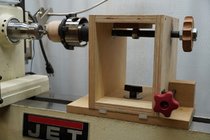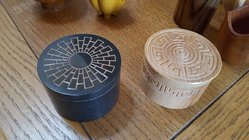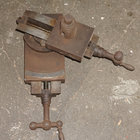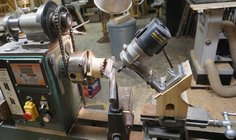Well, considering that I ALWAYS have to 'experiment' I am thinking that with making the threaded boxes, having an X Y jig that I can put a cutter on would save me a lot of time when making the threaded boxes. I want my blanks to have dead flat top/lid and base for gluing onto waste blocks. I also want to be able to cut the sides of the recess and tenon to dead parallel before cutting the threads. I am figuring that it may even be possible to cut the recess and tenon threads spot on the first time by measuring the offset. Difference should be in the 0.06 range, inches that is. Any ideas? I have a bunch of possibilities for cutting material from tantung to M42 HSS. Kind of hoping there is some thing out there that would go on a 12 inch lathe. Hope I don't need a third mini lathe to do this with.... Who knows, I may find another use for a third mini lathe if I get one....
robo hippy
robo hippy




